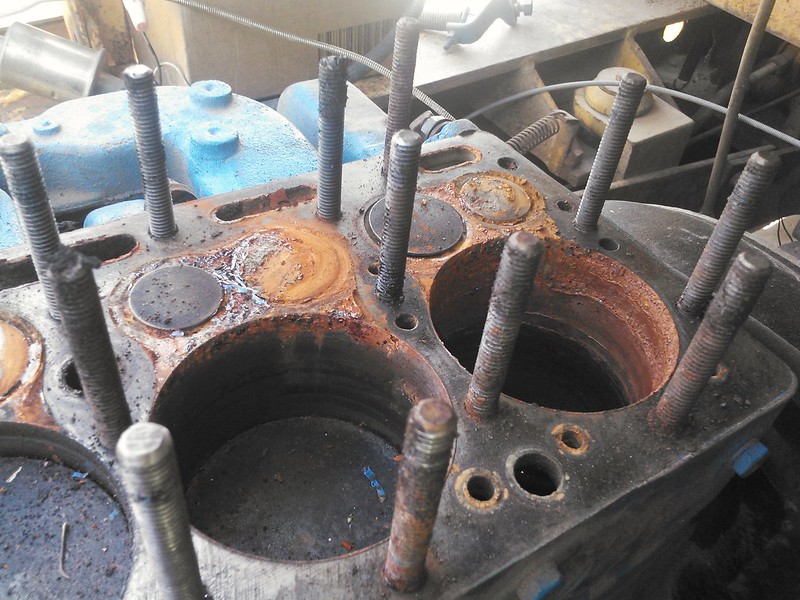Bobw
Diamond
- Joined
- Feb 8, 2005
- Location
- Hatch, NM Chile capital of the WORLD
I'm thinking I need a pump rebuild...
Background info.. Its a big bastard.. On an old 15k lb clark.. From what I can gather the 20k and the 25k where
the same forklift, but with a bigger counterweight (and lots of steering problems). The main cylinder is
about 11 foot plus long and 8" in diameter, single stage.
From what I can gather from the part # its rated 20GPM and 4000psi..
Kind of hard to match it all up, it was obsoleted in the 70's..
I think I already know the road I'm going down with this thing, I mainly want to verify that I'm not getting
screwed and I'm making the right decision..
I don't feel like messing with it, I don't want to screw it up, and I just want it to work, and work correctly
for another 65 years.
So I'm going to send it out....
Is this a wise choice????
Any preferred place to send them?
Does anybody have an experience having a similar size pump rebuilt..
Should I get the valve body rebuild at the same time??? Its just up, down(gravity) and tilt. I know it bleeds
on both sides... I didn't get a quote on this since I just thought of it... Ball park on this? or is this
something I can tackle with out fear of messing it up???
I already got a quote on the pump.. I think its from a place that knows what the hell they are doing, and the
price actually came in right at my "I hope its only $XXXXXXX" price and a fair bit below my "put it off" price...
I'll tell y'all the quote I got and from where, but I want to at least get a few opinions and random internet
guesses first..
Thanx in advance for any and all info/opinions/guesses.. This is new territory for me.
Background info.. Its a big bastard.. On an old 15k lb clark.. From what I can gather the 20k and the 25k where
the same forklift, but with a bigger counterweight (and lots of steering problems). The main cylinder is
about 11 foot plus long and 8" in diameter, single stage.
From what I can gather from the part # its rated 20GPM and 4000psi..
Kind of hard to match it all up, it was obsoleted in the 70's..
I think I already know the road I'm going down with this thing, I mainly want to verify that I'm not getting
screwed and I'm making the right decision..
I don't feel like messing with it, I don't want to screw it up, and I just want it to work, and work correctly
for another 65 years.
So I'm going to send it out....
Is this a wise choice????
Any preferred place to send them?
Does anybody have an experience having a similar size pump rebuilt..
Should I get the valve body rebuild at the same time??? Its just up, down(gravity) and tilt. I know it bleeds
on both sides... I didn't get a quote on this since I just thought of it... Ball park on this? or is this
something I can tackle with out fear of messing it up???
I already got a quote on the pump.. I think its from a place that knows what the hell they are doing, and the
price actually came in right at my "I hope its only $XXXXXXX" price and a fair bit below my "put it off" price...
I'll tell y'all the quote I got and from where, but I want to at least get a few opinions and random internet
guesses first..
Thanx in advance for any and all info/opinions/guesses.. This is new territory for me.



